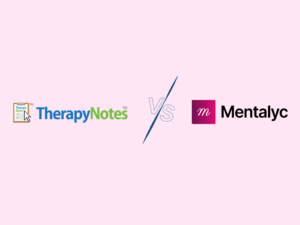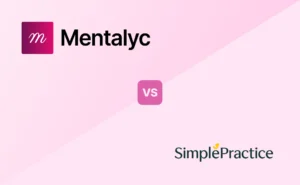Group therapy sessions can feel daunting for a new client which is why well thought out ice breakers are crucial to help break the ice and to make the client feel at ease. The ice breakers will also facilitate building of connections and belongingness amongst the group members.
The Role of IceBreakers In Group Therapy
Before going into specific activities, it is important to briefly explore the reasons why ice breakers are necessary in therapeutic settings. Ice breakers serve a variety of purposes, including reducing initial anxiety, creating psychological safety, and modeling healthy group dynamics or establishing group cohesion. If conducted efficiently, these ice-breaking activities will establish the framework for effective therapeutic work by:
- Creating an atmosphere of acceptance and trust
- Reducing initial resistance to participation and opening up
- Creating healthy group dynamics and cohesion
- Building rapport between group members and facilitators
Documenting group work feels like writing several notes at once capturing each participant’s progress, the group’s shared themes, and the therapist’s interventions in a way that still meets insurance requirements. That’s where Mentalyc helps. It generates structured, insurance-ready group notes in minutes, highlighting both individual contributions and group dynamics. Instead of spending an hour reconstructing what happened, you finish with accurate documentation and more time to focus on facilitating the group itself.
Introduction Activities
1. The Creative Name Game
How to Conduct: Everyone sits in a circle; each person states his or her name and an adjective that begins with the same letter as their name (for example, “Marianne the Merry,” “dense Dan”). To provide a good example and set the tone, you could begin introducing yourself in this manner. As each person states his or her name, the group should repeat the name and adjective together so that the activity continues with a chorus of encouragement, contributing to memory enhancement and communal bonding.
How It Helps in Rapport Building: The activity creates an immediate rapport by building bridges through creativity and humour. The choice of self-descriptive adjectives gives others a peek into individuals and provides reinforcement through group repetition of support.
2. Personal Show and Tell
How to Conduct: Prior to the session, ask participants to bring one item that is personally significant to them for show and tell. Once everyone is seated in a circle, inform them that each one will have three to five minutes to tell about their item and why it is significant, followed by a discussion. To model sharing, the facilitator will speak first; show depth and vulnerability without crossing professional boundaries.
How It Helps in Rapport Building: This activity helps break the ice because of the storytelling and shared experiences. The objects serve as anchors to begin conversation and help participants express themselves more freely. Sharing personal stories associated with the selected item also triggers shared memories in other group members and natural connection and empathy.
Activities for Emotional Expression
3. Draw Your Mood
How to Conduct: Provide each participant with paper and some arts-and-craft materials to draw (markers, colored pencils, crayons). Ask them to illustrate their state of mind at the moment during a time period of 10 to 15 minutes. Stress that they are not to worry about artistic quality-their focus is on self-expression and emotion. Set a calm ambience around-the session, if appropriate, with soft music in the background during the drawing phase. Completed drawings can then be shared by participants, at their own discretion.
How It Helps in Rapport Building:The very act of being non-verbal will be helpful for participants who have difficulty in verbally expressing themselves. Together, while facilitating a debrief on their drawings, open up the sharing by asking questions about colors chosen, shapes depicted, or images portrayed. This process often reveals shared emotional experiences, helping group members recognize they’re not alone in their feelings.
4. Emoji Feelings Explorer
How to Conduct: Collect an assortment of emoji cards illustrating different emotions, from simple emotions, e.g., happy, sad, to more finer emotions, e.g., overwhelmed, jealousy,etc. These should be placed in a location where every participant can see them, or individual sets may be given to each participant. Ask participants to very briefly select one or more emojis that express their current emotion. Give participants a few moments for thought before sharing begins.
How It Helps in Rapport Building: The activity allows for bridging the gap between verbal and non-verbal expression, inviting participants to share emotions using popular emojis imagery. Emojis, as a shared language, create normalization of emotions and experiences, while the sharing reveals the ways people perceive and elucidate emotion differently.
5. Object Association Journey
How to Conduct: Place a mix of out-of-the-ordinary objects at the center of the group. For example – mixer grinder, torch, stones, etc. Every participant should take one object that symbolizes his/her current emotional state or one’s life situation. Finally, each should state his/her choice and why it is significant to him/her in the context of the group.
How It Helps in Rapport Building: This activity’s metaphorical nature often helps individuals express the diversity and complexity of feelings one might feel uncomfortable vocalizing directly. Group members begin to understand and empathize with one another through the interpretations and dialogue that are shared.
Activities the help in trust-building
6. The Gentle Hot Seat
How to Conduct: One participant sits in the “hot seat” voluntarily and allows the other participants to pose simple, supportive questions for a period of time. Participants could be encouraged to ask various questions, including what is favorite, hobbies, or dreams for the future. Key is to retain a warm, loving, non-judgmental safe space for sharing them in all comfort.
How It Helps Build Rapport: This helps build trust by creating a space in which they truly feel seen and valued. The supportive questions encourage positive group dynamics and connectedness.
7. Common Ground Circles.
How to Conduct: All the participants sit in a circle. The facilitator reads out statements (for example, “I have siblings” or “I love to travel”). Any person who identifies with that statement is invited to step into the middle of the circle or raise a hand. In between each new statement, participants return to their seats while the next statement is read.
How It Helps Build Rapport: This helps build a sense of group by highlighting shared values, life experiences or interests. While the group centers around commonality, it diminishes the feeling of isolation and connections in conversations.
Reflection-Based Activities
8. Gratitude Circle
How to Conduct: Each participant shares what they are genuinely grateful for and the reasons why. Participants are encouraged to recall the positive aspects of their lives and the therapeutic process.
How It Helps in Rapport Building: This activity helps to change the focus from challenges to appreciation, leading to positive thinking and mutual connections through shared values and experiences.
9. Future Self Letter
How to Conduct: Participants write letters to themselves with their hopes and goals, along with words of encouragement. The letters might be collected to be revisited in the future, or they could be kept by the participants as a personal reminder.
How It Helps in Rapport Building: This activity lets the group members project the wishes for themselves and serve as reminders about their own journey to therapy while they share the excerpts from the letters which helps in group cohesion through vulnerability and trust.
10. Values Mapping Journey
How to Conduct: Members can be provided a list of values and they have to select thrones that they identify with. Discussion focuses on why these values matter and how they influence daily life decisions.
How It Helps in Rapport Building: This activity helps build self-awareness while fostering understanding among group members. Recognizing shared values strengthens bonds and enhances group cohesion.
Creative Expression Activities
11. Collaborative Story Weaving
How to Conduct: The group puts together a story collaboratively, with each member adding a sentence to it. It is guided along a therapeutic theme, such as “Overcoming Challenges” or “Finding Strength.” The story concludes discussion of the themes–and the relatedness to the journey of the group.
How It Helps in Rapport Building: This prompts active listening while creating a shared experience of creative problem-solving in a collaborative fashion while encouraging team-building spirit based on mutual respect.
12. Give Me a Minute
How to Conduct: Use random topic cards and ask each participant to speak spontaneously on that topic, one minute each. The cards could be about a variety of topics ranging from lighthearted (i.e., favorite vacation) to slightly reflective (i.e., proudest moment). A demonstration works well to set the tone and energy level.
How It Helps in Rapport Building: The one-minute timing can help encourage engagement and push the group members to present their emotions and thoughts in an organized manner. Rapport building takes place among the members through shared humor and gradually, through the sharing of personal stories.
13. Strength Spotting Circle
How to Conduct: During this exercise, group members take turns offering positive observations and feedback about one another. Each member mentions a true strength they noticed in each other.
How It Helps in Rapport Building: This enhances self-esteem and may build a more constructive and supporting group dynamic. People end up feeling valued, which adds up to a more positive setting in the group.
14. Shared Goals Partnership
How to Conduct: Pair up participants and have them discuss their personal goals in the therapeutic journey. Partners then introduce each other to the whole group their respective goals, followed by mention of some commonalities in their hopes and dreams.
How It Helps in Rapport Building: This exercise can be helpful for members who might not be comfortable in sharing with a bigger circle initially. The activity helps promote empathy, and gradual comfort to the group. Sharing of goals helps participants feel connected to one another and reciprocally supported in their therapeutic endeavor.
15. Mindful Moment Sharing
How to Conduct: The facilitator will conduct a brief guided meditation/visual imagery focusing on mindfulness or relaxation. For example – a beach scenario or square breathing. Afterward, ask participants to share a moment of clarity or calm they felt during the ice breaking exercise.
How It Helps in Rapport Building: This activity introduces mindfulness techniques while fostering a calm, reflective atmosphere within the group. Sharing experiences of peace and joy builds an emotional connection.
16. Color-Emotion Wheel
How to Conduct: Give the participants a color wheel or ask them to visualize one. Individuals then select colors describing their present emotional state and explain their choice to the rest of the group. Discuss the reasons for choosing those colors and associations.
How It Helps in Rapport Building: This activity encourages emotional awareness and creative expression. The discussion reveals common emotional experiences and fosters group empathy.
Growth-Oriented Activities
17. Metaphorical Journey Mapping
How to Conduct: It starts with participants being asked to share their therapeutic journey in whichever metaphor they would like (i.e. mountain climbing, ocean sailing, or exploring a rather dark forest). At the same time, a description of challenges, moments of strengths, and aspirations as part of a story has to be highlighted. Participants then share their metaphors with the whole group, leading to an exploration of stronger understanding and connections.
How It Helps in Rapport Building: Sharing using metaphors allows participants to explore their personal journeys and challenges in a creative way. Exchanging these metaphors can promote vulnerability, insight, and reciprocal support in the group.
18. Boundary Exploration
How to Conduct: This activity starts with distribution of art materials and supplies that the group members might need in order to create a visualization of their personal space and boundaries. For example – such as drawing circles that signify levels of comfort with others. Encourage a discussion about what these boundaries are, what they mean and what they look like in real life.
How It Helps in Rapport Building: This activity will create an environment for participants to process their thoughts and experiences in the context of a group. Group discussions on boundaries will also help validate the importance of establishing and respecting boundaries. In finding such acknowledgement, members can gain support from the other members and learn from them, too.
19. Two Truths and a Dream
How to Conduct: Ask participants to share three statements in total, of which, two true statements will be about themselves and one will be an aspiration or dream. The group then guesses which statement is the dream. This is a modified version of “Two Truths and a Lie” which shifts the focus to positive and future-oriented thoughts.
How It Helps in Rapport Building: This activity sparks curiosity and engagement while promoting a positive, future-oriented mindset amongst all its members. It helps group members connect over shared dreams and aspirations.
20. Favorite Things Sharing
How to Conduct: Participants will talk about one of their favorite things. This could be something as intangible as a book, activity, or place which brings them joy. They will explain what it means to them and how it makes their life better. This activity is similar to show and tell. The only difference is that the present activity is specific about the object being a likable thing.
How It Helps in Rapport Building: Helps to connect and forms relationships with others on the basis of common interests and experiences in the group. This allows the group members to discover the members’ likes and what brings joy, creating a warm atmosphere.
Conclusion
These ice breakers serve as valuable tools for building group connections and for creating a supportive therapeutic ambience. The particular choice of an ice-breaker needs to be guided first and foremost by the needs of one’s group and therapeutic goals. Keep in mind that the best ice-breakers are the ones that feel natural and fit in with the flow of a given group.
References –
TherapLatform. (2023). Icebreakers for Group Therapy. https://www.theraplatform.com/blog/368/icebreakers-for-group-therapy
Carepatron. (2023). Effective Therapy Icebreakers to Foster Connection. https://www.carepatron.com/blog/effective-therapy-icebreakers-to-foster-connection
TherapyPMS. (2023). Easy to Implement Icebreakers for Effective Group Therapy. https://therapypms.com/easy-to-implement-icebreakers-for-effective-group-therapy/
Why other mental health professionals love Mentalyc

“A lot of my clients love the functionality where I can send them a summary of what we addressed during the session, and they find it very helpful and enlightening.”
Therapist

“It’s so quick and easy to do notes now … I used to stay late two hours to finish my notes. Now it’s a breeze.”
Licensed Professional Counselor

“By the end of the day, usually by the end of the session, I have my documentation done. I have a thorough, comprehensive note … It’s just saving me hours every week.”
CDCII

“Having Mentalyc take away some of the work from me has allowed me to be more present when I’m in session with clients … it took a lot of pressure off.”
LPC







